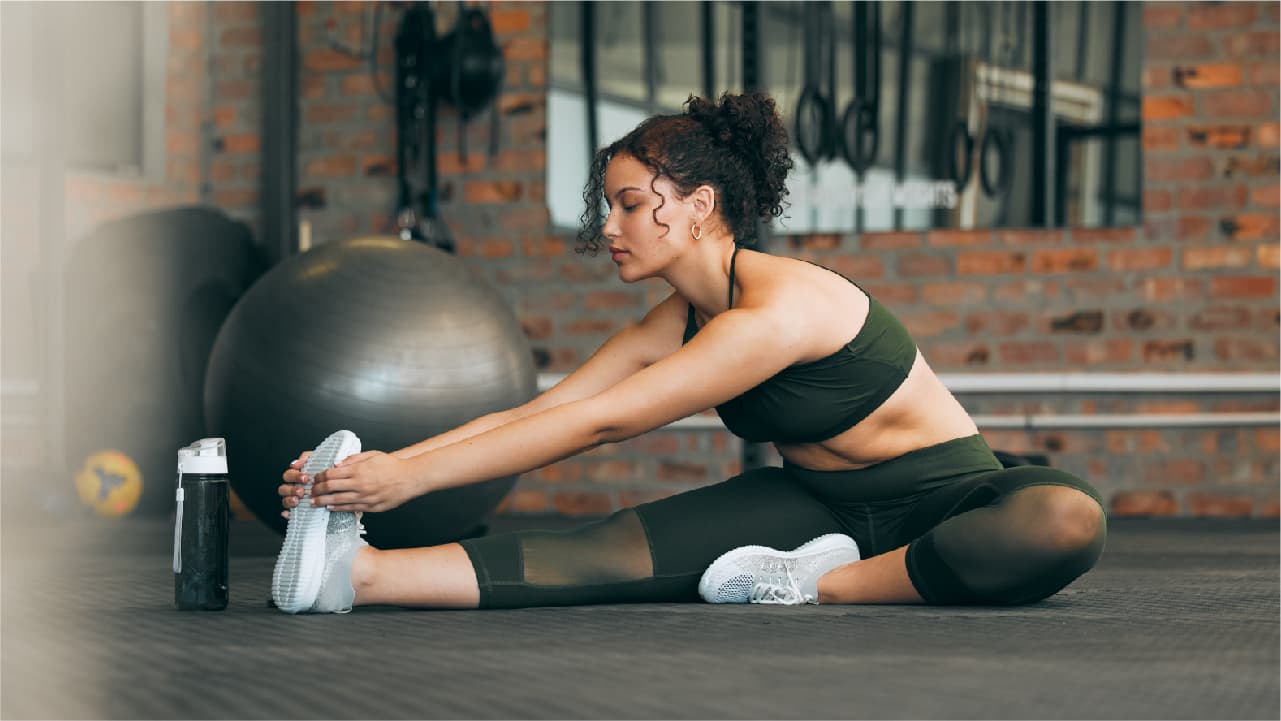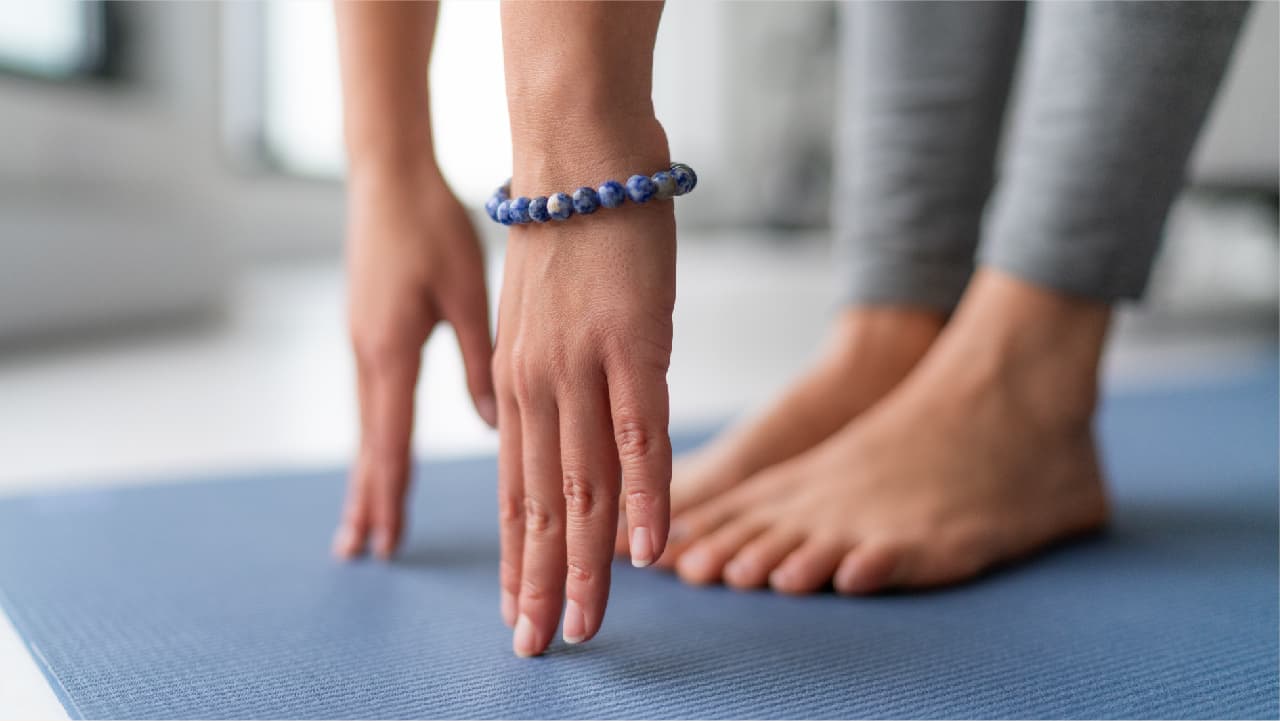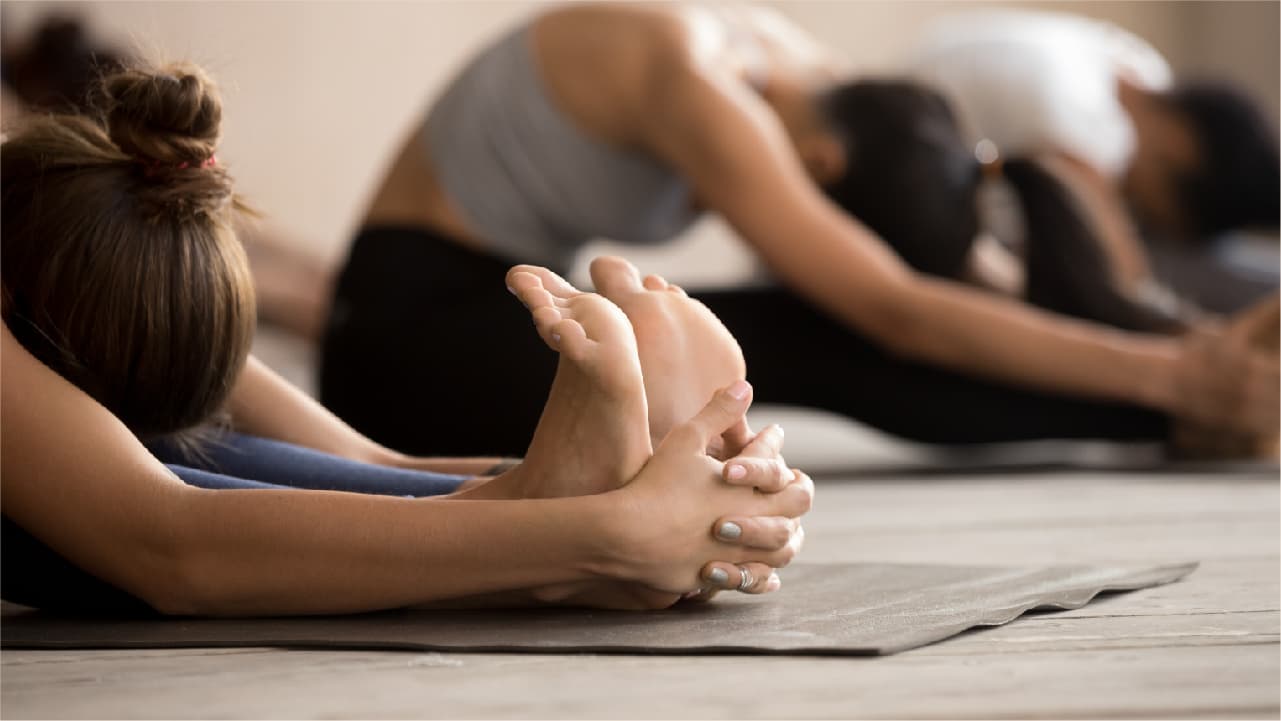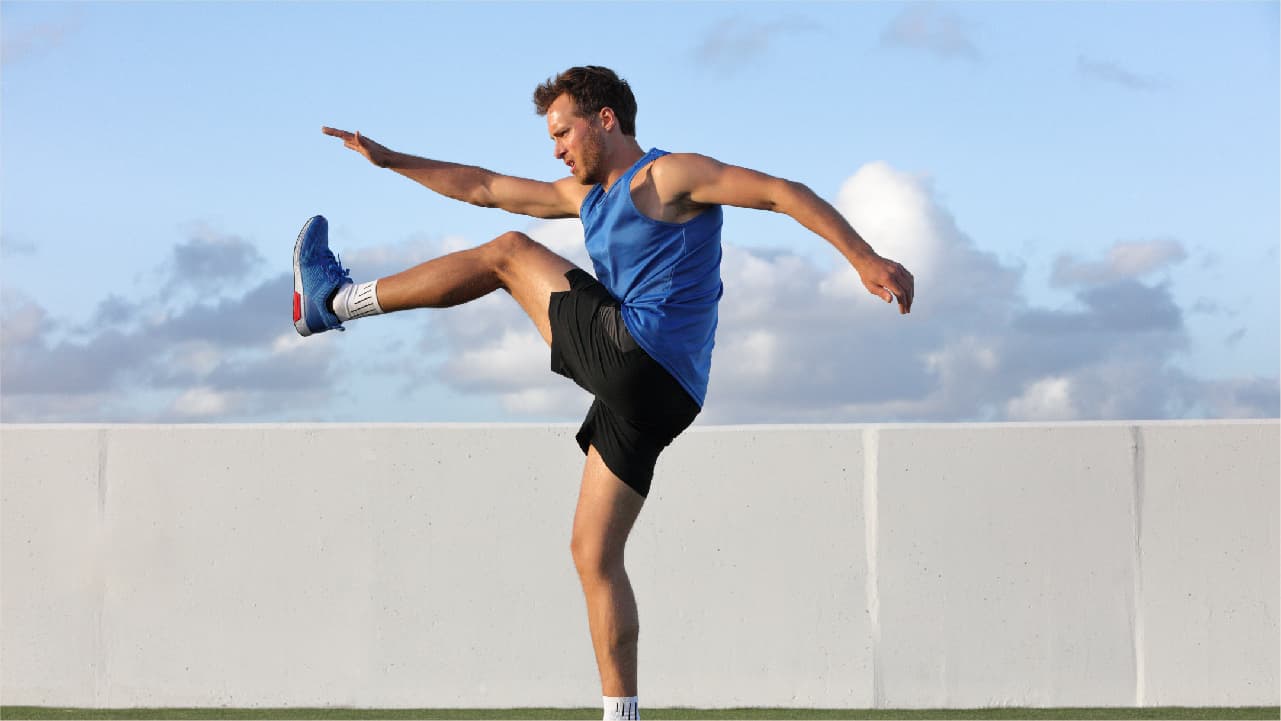Key Takeaways
- Stretching is important, but the type, timing, and amount you use around training can either support or sabotage your performance.
- Overdoing long static stretches before strength or power work may temporarily reduce force output, while dynamic warm-ups often prepare muscles more effectively.
- Thoughtful programming that balances mobility, activation, and strength work protects joints and helps you move better—not just “looser.”
- Joint-friendly training plus lifestyle support can help tame everyday aches, extend your lifting lifespan, and make your workouts feel better overall.

It's a watershed moment.
You'll always remember where you were when it happened. You might feel a sense of loss...of sadness. And though logic and reason told you this day would come, nothing quite prepares you for it...
The moment when you rise from the sofa and let out an audible groan.
And if this hasn't happened to you yet, let me tell you, when it does it will shock you. It will arrive completely unannounced. It will be involuntary. And you'll feel like you've just been pick pocketed of your youth.
But then you'll pull yourself together.
Game on Mother Nature. Game on...
Your next move is critical. It will involve a steadfast resolve to look after yourself more. To stop these aches and pains dead in their tracks. This plan will most likely involve some sort of new exercise. And as part of that exercise, you will need to make sure you stretch.
At this point, everyone - and I do mean everyone -, will stress the importance of warming up and stretching. But when you look into stretching, what's best and what's not, there will be a whole load of conflicting and ambiguous information out there.
Stretch, but don't stretch too much.
Some will say stretching is bad. Or that static stretching is the work of the devil. Some will argue against that, saying it's all outdated nonsense. And all of this will leave you feeling disoriented. Because everyone around you is doing yoga. Which is stretching. And they all look like the picture of health. It's confusing.
Mother Nature is no easy opponent. But if you're looking to take her on. To support full body flexibility and protect against those aching joints, this article is for you. This is the stuff you need to know.
This is stretching 101.
Stretching: The Truth

Ok you're taking action. This is good. But where to start? We've all seen the journeys... read the blogs... watched the Rocky box set. We know that exercise is hard. Things could get ugly. And at times, we may want to give up.
But if Rocky Balboa taught us anything, it's that barriers are there to be pushed through.
And it's this belief in breaking boundaries that makes fitness and exercise a tricky field to navigate. Even for the experienced. We know we should push ourselves, but how hard is too hard? If we're feeling a twinge here and there, if we're aching a few days after, how do we know if it's a good pain or a bad pain? It's that nuanced area that can lead us into misconceptions and unhealthy exercise patterns.
Here's a few misconceptions that regularly crop up, and here's what you need to know.
1. Stretching is Good for All Sports

The Truth: It's not a one-stretch-fits-all situation. The benefits of stretching are highly sport-specific. Dynamic sports like soccer and basketball gain more from dynamic stretching (more on this later), which aids the efficient storage and release of energy. In contrast, for low-intensity sports, extreme flexibility may not enhance performance or prevent injuries. In these cases, static stretching still holds value.
Do: Customize your stretching routine to match your sport.
Don't: Assume a universal stretching method benefits all athletic activities.
2. Always Stretch Before Exercise to Prevent Injuries

The Truth: Stretching's role in preventing injuries isn't a clear-cut case. While dynamic stretching is beneficial before high-intensity sports, it's less about preventing injuries and more about preparing the body for the activity ahead. Static stretching on cold muscles might increase the risk of injury as they're less flexible and have lower elasticity.
Do: Include dynamic stretches before engaging in vigorous sports.
Don't: Solely depend on pre-exercise stretching as a means to avoid injuries, particularly in less intense activities.
3. More Flexibility Equals Better Performance

The Truth: Flexibility is not the end-all for athletic prowess. While it's crucial for sports involving lots of elastic movements, like gymnastics, it might be less significant in sports where strength and endurance take precedence.
Do: Focus on flexibility if your sport demands extensive stretching and bouncing.
Don't: Over-prioritize flexibility in sports where muscle power and stamina are key.
4. All Stretching Techniques Are Equally Effective

The Truth: Different stretches serve different purposes. Static stretching, often done post-workout, aids in cooling down and improving flexibility. Conversely, dynamic stretching is more suitable for warming up and prepping muscles for activity.
Do: Select the type of stretch based on your specific needs and the nature of your activity.
Don't: Rely on a single method of stretching for every scenario.
Static vs. Dynamic Stretching: What Are They?
These two types of stretches get the most press. And they're the two with the most amount of conflicting information.
Researching these two, was like sitting on the side-lines of an explosive family feud.
Whilst dynamic stretching tends to be the most logical and favourited. Static stretching seems to light the touchpaper for debate. And when it comes to the question of which one is better, there's a lot of flip-flopping on supporting evidence either way. So, what are they, and when should we be doing them?
Static Stretching

Maybe it's because it's old school, but this is the one that's been scrutinized in recent years. Static stretches are the ones we did in P.E. Touching our toes, balancing on one leg, stretching out our calves. Holding the position until we lost balance or consciousness. These were always carried out as a warm-up exercise.
Which is where we went wrong.
Because studies have shown that holding those stretches for 60 seconds or more is counterproductive for performance. It turns out, this sort of stretch actually weakens the muscles by 4.0-7.5%. And, because cold muscles have a lower elasticity, stretching them intensely at this stage of exercise could leave us prone to strains or tears.
Dynamic Stretching

Leg swings, arm circles, walking lunges. These are the stretches you see athletes doing whilst warming up on the side-lines. The action of dynamic stretches normally mimics the exercise that's to follow. So rather than being held in a static position, they're carried out in a fluid motion.
These are the best type of stretch to do before your workout.
The idea is to warm up the muscle and to do that, the body temperature needs to be raised. Warm muscles and dilated blood vessels pull oxygen from the bloodstream more efficiently and use stored muscle fuel more effectively. So anything that's incorporating some gentle movement that gradually builds along with stretching is the better way to warm up.
Stretching Dos and Don'ts
Dynamic Stretching Before Workouts
Do use dynamic stretching as part of your warm-up routine. Exercises like leg swings, arm circles, and walking lunges are great to prepare your muscles and joints for the activity ahead.
Don't skip the warm-up, as dynamic stretches are crucial for increasing muscle temperature and blood flow, which can enhance performance and reduce the risk of injury.
Static Stretching After Workouts
Do incorporate static stretching into your cool-down routine or as a separate flexibility session. Holding stretches for 15 to 60 seconds can improve overall flexibility and help in muscle recovery.
Don't use intense static stretching as a warm-up before high-intensity activities. Prolonged static stretches can temporarily reduce muscle strength and power when done just before strength-based or explosive exercises.
Protecting full-body flexibility doesn't stop with your exercise plans. Maintaining a flexible edge requires a two-pronged attack. Nutrition is key. What you eat can significantly impact your flexibility and overall joint health. Let's look at the superfoods that will fuel you through.
6 Foods that Aid Flexibility
1. Sulfur-Rich Vegetables

Vegetables like garlic, onions, and cruciferous veggies (e.g., kale, broccoli, Brussels sprouts) are excellent sources of sulfur, which is a key component in maintaining joint health and flexibility. These vegetables support the body's production of MSM (methylsulfonylmethane), a compound known for its anti-inflammatory and recovery properties.
2. Colorful Fruits

Oranges, strawberries, and other citrus fruits rich in Vitamin C are vital for collagen formation. Collagen is crucial for the health and elasticity of connective tissues in the joints.
3. Nuts and Seeds

Sources of omega-3 fatty acids, nuts and seeds like flaxseeds, chia seeds, and walnuts can help reduce inflammation in the joints. Aiding in flexibility and pain reduction.
4. Whole Grains

Magnesium-rich whole grains like brown rice, quinoa, and barley, are important for muscle health and flexibility.
5. Turmeric and Ginger

These spices contain natural anti-inflammatory compounds which can help with joint pain relief and mobility.
6. Bone Broth

A powerhouse of nutrients like glucosamine, chondroitin, and collagen. Essential for maintaining healthy joints and promoting flexibility.
Supplements for Flexibility
Not everyone enjoys a cup of bone broth. And it can be a mission to get all of these nutrients from your diet alone. Performance Lab® Flex can help.

Flex provides 100% plant based alternatives for those essential joint health compounds like MSM, chondroitin, and glucosamine.
Flex is an ultraclean stack of soothing botanicals and nourishing building blocks that can help:
- Soothe away joint aches and stiffness.
- Protect against damaging enzymes and free radicals.
- Support synovial fluid for optimal joint flexibility.
- Support mineral density for joint end integrity.
- Help hydrate cartilage, keeping it thick, springy and healthy.
- Nourish for limber function and healthy repair.
Find out more about Flex here and read what our customers are saying about it.















